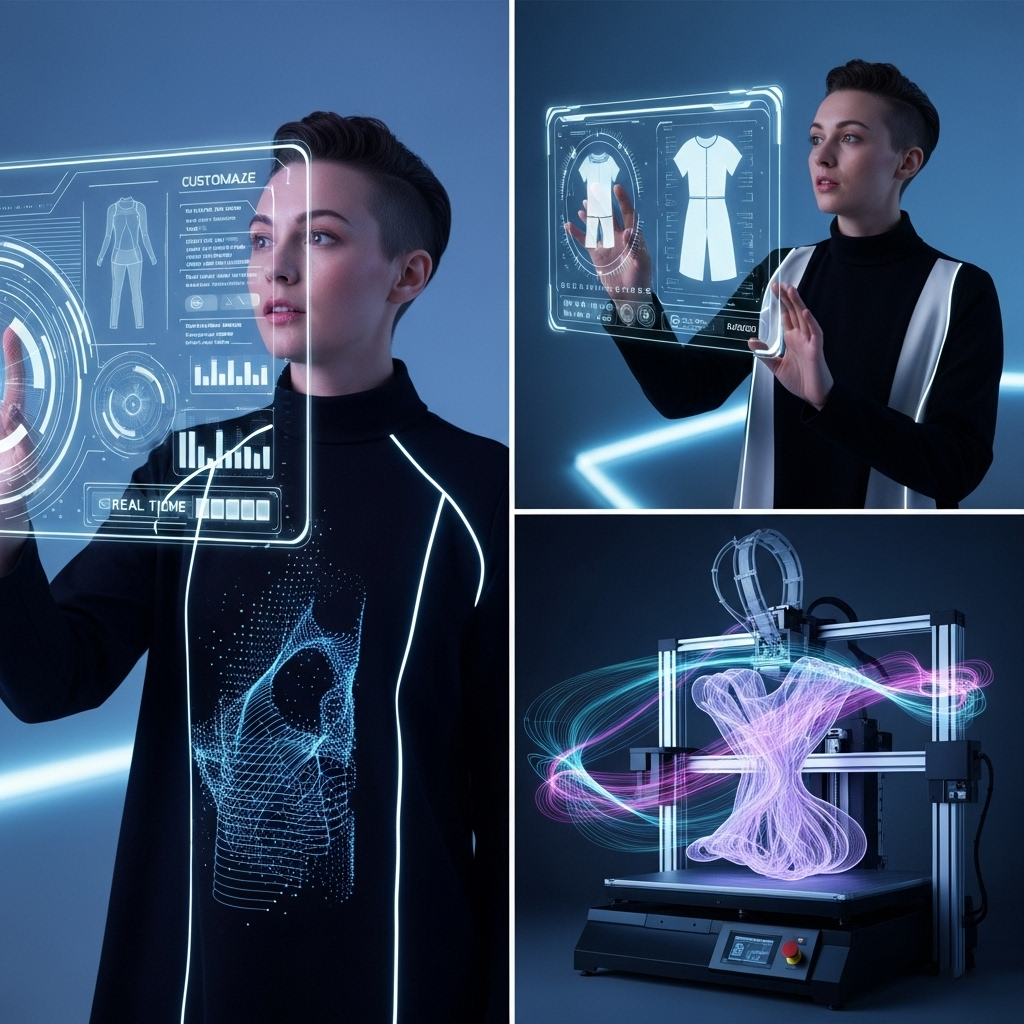The fashion industry, long rooted in tradition and seasonal cycles, is on the cusp of a revolutionary transformation driven by rapid advancements in innovation, technology, and an unprecedented focus on personalization. From how clothes are designed and manufactured to how consumers interact with brands and express their style, the future of fashion promises a landscape that is more efficient, sustainable, and uniquely tailored to individual needs.
One of the most significant disruptors is technology in manufacturing. Additive manufacturing, commonly known as 3D printing, is moving beyond prototypes and into wearable garments. This technology allows for on-demand production, significantly reducing waste from overproduction and minimizing the need for extensive supply chains. Imagine printing a custom-fitted dress or a pair of shoes at home, or at a local hub, eliminating shipping emissions and mass inventory. Similarly, robotic automation in factories is increasing efficiency and precision, while also having the potential to bring manufacturing closer to consumers, reducing lead times and allowing for greater responsiveness to demand.
Beyond production, smart textiles and wearable technology are blurring the lines between fashion and function. We are already seeing garments with integrated sensors that monitor health metrics, regulate body temperature, or even change color based on external stimuli. The future holds even more sophisticated possibilities: clothes that harvest energy, fabrics that adapt to environmental conditions, or apparel that provides immersive augmented reality experiences. This integration means fashion will not just be about aesthetics; it will actively enhance our lives and interact with our digital environments, turning our wardrobes into extensions of our personal technology.
The retail experience itself is being reimagined through technology. Augmented Reality (AR) and Virtual Reality (VR) are allowing consumers to “try on” clothes virtually, either through their phones or in immersive virtual showrooms. This not only enhances the online shopping experience but also reduces the number of returns, a significant environmental and logistical challenge for e-commerce. AI-powered recommendation engines are becoming incredibly sophisticated, analyzing individual preferences, body types, and even social media activity to offer highly personalized product suggestions, moving away from one-size-fits-all marketing.
This brings us to the paramount trend of personalization. Consumers increasingly crave uniqueness and a sense of ownership over their style. The future of fashion will cater to this desire through various avenues. Customization platforms will become more prevalent, allowing individuals to select specific colors, fabrics, and design elements for their garments before they are made. Made-to-measure and bespoke services, once exclusive to luxury markets, are becoming more accessible through digital body scanning and advanced manufacturing techniques, ensuring a perfect fit and reducing fabric waste associated with standard sizing. The ultimate goal is a shift from mass-produced items to on-demand, individualized creations.
Furthermore, data analytics and artificial intelligence (AI) are empowering brands to make more informed decisions across their operations. AI can analyze vast amounts of data to predict trends with greater accuracy, optimize inventory, and even assist designers in generating new concepts based on consumer preferences. This data-driven approach allows for more efficient resource allocation, reduces waste, and helps brands stay agile in a rapidly changing market.
However, this technologically advanced future isn’t without its challenges. Data privacy concerns regarding body scans and personal preferences will need to be addressed. The digital divide could exacerbate inequalities if access to cutting-edge fashion remains exclusive. Moreover, maintaining the human element of creativity and craftsmanship amidst increasing automation is crucial. Fashion, at its heart, is an art form, and technology should serve to enhance, rather than replace, human ingenuity.
The future of fashion is a dynamic blend of innovation and intimacy. It’s about leveraging technology to create a more sustainable, efficient, and ultimately, a more personalized industry. It promises a world where clothes are not just something we wear, but an intelligent, adaptive, and highly individual expression of who we are, seamlessly integrated into our evolving digital and physical lives. The journey has just begun, and the possibilities are as limitless as our imagination.


Leave a Comment
Your email address will not be published. Required fields are marked *